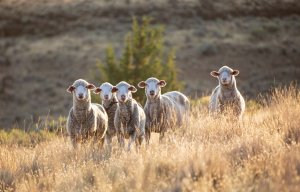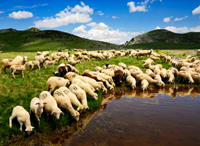
US launch for Nativa Regen

Australian Wool Innovation (AWI) has launched the Wool Carbon Alliance, a group of Australian and international wool industry representatives working together to market the natural benefits of wool as the ideal fibre to help reduce global warming. AWI says that, according to international research, a household can significantly reduce its carbon emissions by living with wool: insulating with wool, wearing wool, walking, sleeping and sitting on wool. The European Co

3rd November 2009
Innovation in Textiles
|
Sydney
 Australian Wool Innovation (AWI) has launched the Wool Carbon Alliance, a group of Australian and international wool industry representatives working together to market the natural benefits of wool as the ideal fibre to help reduce global warming.
Australian Wool Innovation (AWI) has launched the Wool Carbon Alliance, a group of Australian and international wool industry representatives working together to market the natural benefits of wool as the ideal fibre to help reduce global warming.
AWI says that, according to international research, a household can significantly reduce its carbon emissions by living with wool: insulating with wool, wearing wool, walking, sleeping and sitting on wool. The European Commission reports that a household can cut its CO2 emissions by up to 300kg a year and energy bill by 5-10 per cent simply by reducing its heating by a mere 1°C.
“Wool has an important role to play as part of the everyday carbon solution. Ours is an ambitious plan to let the world know just how versatile our great natural fibre is. It’s wool’s time to help the planet and for us to sell more wool in the process,” says alliance chair and AWI board member Chick Olsson.
Last month, AWI facilitated an alliance of growers and scientists to position wool as the ‘planet-friendly fibre’, an initiative which AWI CEO Brenda McGahan says marries wool’s unique natural fibre story with AWI’s new integrated marketing strategy. “The other exciting component is that this initiative brings the industry together around a global issue for which we all feel wool is a natural solution,” says Ms McGahan.
Joining Mr Olsson on the Wool Carbon Alliance are Dr Meredith Sheil (Australian Wool Innovation), Martin Oppenheimer (Australian Wool Growers Association), Günther Beier (International Wool Textile Organisation), Geoff Power (South Australian Farmers Federation and formerly Wool Producers Australia), and Tom Ashby (Australian Association of Stud Merino Breeders).
AWI says that wool is a planet-friendly fibre made from the simple combination of sunlight, water and grass and it is made of up to 50 per cent carbon, stored in a stable form. It is renewable, has the ability to biodegrade without harm to the environment and can be recycled, AWI says.
According to AWI, it takes significantly less energy to produce wool products than man-made fibre products, and this ensures CO2 emissions are kept very low. Therefore, the increased usage of wool can positively reduce the level of greenhouse gases in the atmosphere. Wool also gives advanced and developing countries alike the opportunity to reduce their reliance on fossil fuels, adds AWI.
Mr Olsson also noted the potential for Australian woolgrowers to reduce their carbon footprint through on-farm sequestration of carbon. “Provided carbon accounting methodologies are changed to encourage generation of credits from sources other than agro-forestry, there is enormous potential for farmers to credit from good environmental practice while remaining viable as food and fibre producers and significantly reducing levels of CO2 in the atmosphere.”
AWI says that this positive perspective is shared by the Wentworth Group of Concerned Scientists which calls for a greater focus on the positive role of terrestrial carbon, stored in forests, woodlands, swamps, grasslands, farmland and soils. In its October 2009 Optimising Carbon in the Australian landscape report the group notes: “CSIRO analysis shows that if we could capture just 15 per cent of the biophysical capacity of the Australian landscape to store carbon, it would offset the equivalent of 25 per cent of Australia’s current annual greenhouse emissions for the next 40 years.”
The Wool Carbon Alliance and AWI are working with the Australian Government to research and promote the many roles the fibre can play in a future carbon economy and to take the wool message global. As a preliminary step, alliance member and IWTO president Günther Beier said IWTO would take wool’s voice to the European Parliament in early 2010.

Business intelligence for the fibre, textiles and apparel industries: technologies, innovations, markets, investments, trade policy, sourcing, strategy...
Find out more